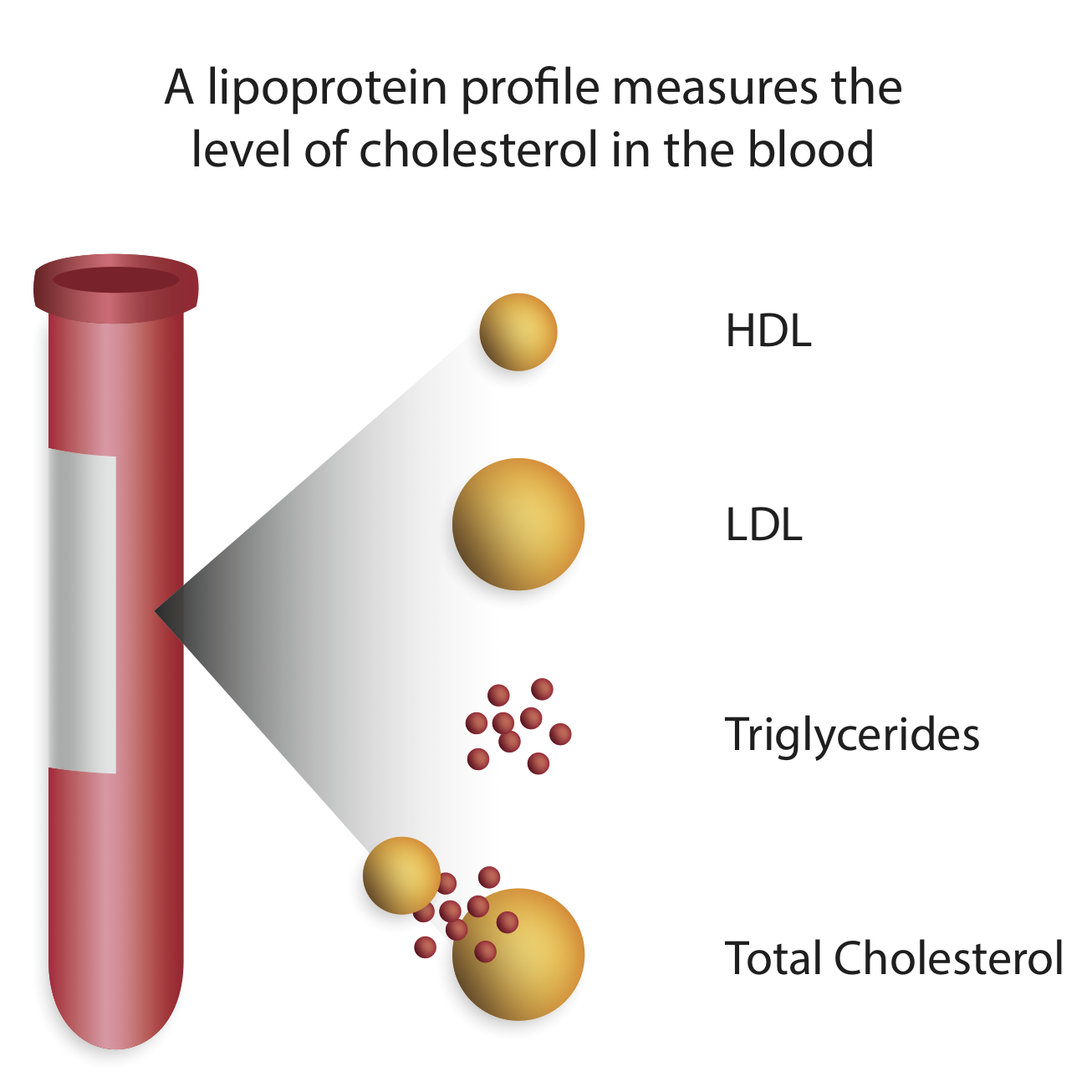The Lipid Panel1,2,3,4,5

When you go to the doctor to get your cholesterol checked, he or she orders a “lipid panel.” The lipid panel is a profile of the various types of cholesterol in an individual’s blood and usually includes the following:
- Total Cholesterol
- Low-Density Lipoprotein (LDL) Cholesterol
- High-Density Lipoprotein (HDL) Cholesterol
- Triglycerides
The purpose of the lipid panel is primarily to identify individuals who may be at risk for cardiovascular disease. It may also be used to identify risk for certain other diseases, such as pancreatitis, a common consequence of elevated triglyceride levels.
The American Heart Association recommends testing total cholesterol levels every 5 years in individuals 20 years of age or older.6
Elements of the Lipid Panel1,2,3,4,5
Total Cholesterol
Total cholesterol is an aggregate measure of cholesterol in the blood stream and is the sum total of LDL, HDL, and VLDL levels. Total cholesterol is used mainly as a screening tool for patients. An elevated total cholesterol level indicates to a physician that further information is necessary to determine whether or not a patient is at elevated cardiovascular risk. According to a landmark trial, the Framingham Heart Study, there is a positive association between total cholesterol and coronary artery disease.7
The National Cholesterol Education Program recommended in a 1987 report that a total cholesterol level under 200 mg/dL be considered normal while a level from 201 to 239 mg/dL be considered borderline-high and a level of 240 mg/dL and above be considered high.8
LDL Cholesterol
LDL cholesterol is the so-called “bad” cholesterol that most patients and their physicians are most concerned about. It is a major contributor to the development of atherosclerotic heart disease.
Studies have shown that an LDL cholesterol level below 100 mg/dL is associated with a decreased risk of coronary artery disease. Goal LDL levels are generally tailor to each individual patient; however, a general goal of 50-70 mg/dL should be targeted in order to prevent atherosclerotic plaque formation.
HDL Cholesterol
HDL cholesterol is the so-called “good” cholesterol that is cardio-protective and may actually decrease a patient’s risk of cardiovascular disease. Studies have shown an association between elevated HDL cholesterol levels and a decreased risk of atherosclerosis and coronary artery disease. Unfortunately, attempts to artificially raise cholesterol levels with medications have proven inconclusive in terms of cardiovascular benefits. There are currently no medications approved by the FDA that are specifically indicated to raise HDL cholesterol levels.
Triglycerides
Triglycerides are lipid compounds that float in the bloodstream. An elevated triglyceride level is a risk factor for coronary artery disease. It may also serve as an indicator for insulin resistance related to diabetes. Very high triglyceride levels (>500 mg/dL) can lead to the development of pancreatitis, which can potentially be life threatening.
A triglyceride level below 150 mg/dL is considered normal. A level from 150 to 199 mg/dL is considered borderline high. A level from 200 to 499 mg/dL is considered high. A level greater than or equal to 500 mg/dL is considered very high.




